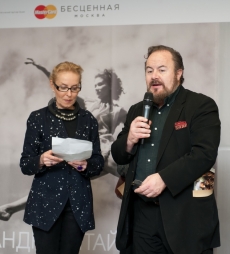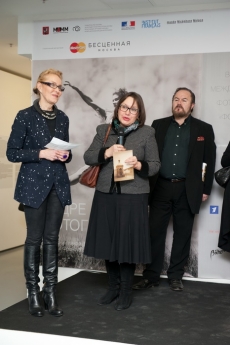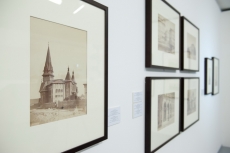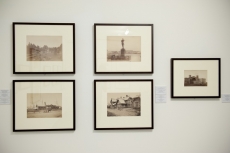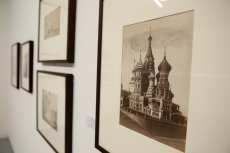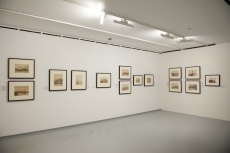Photographs of St. Petersburg and Moscow of 1850 - 1870s
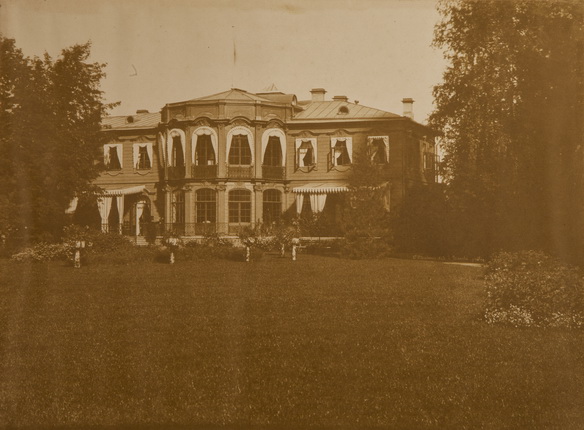
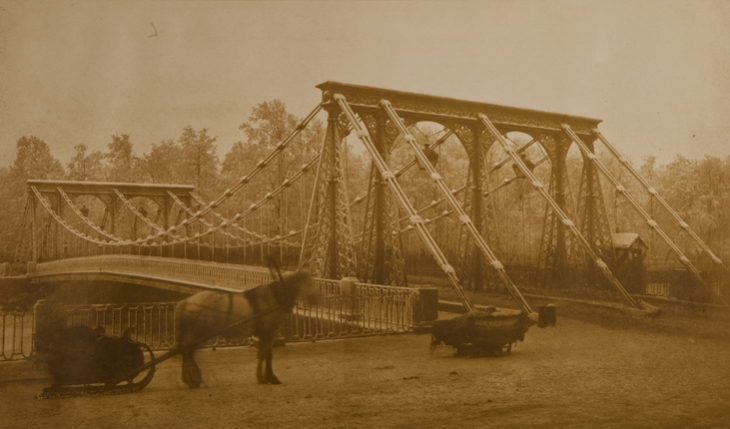
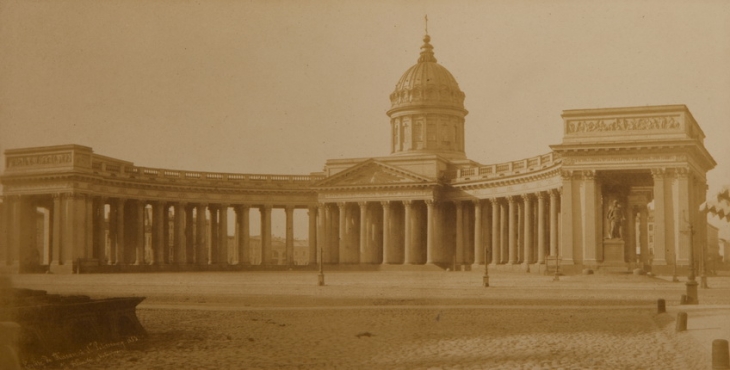
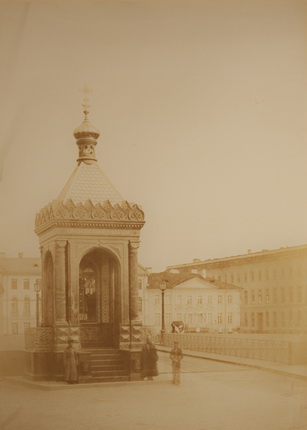
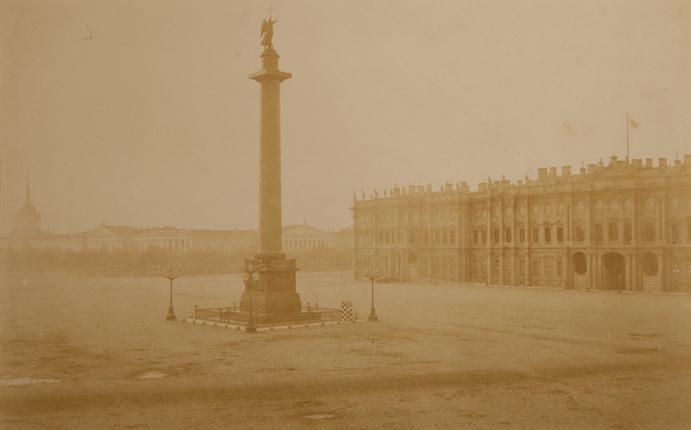
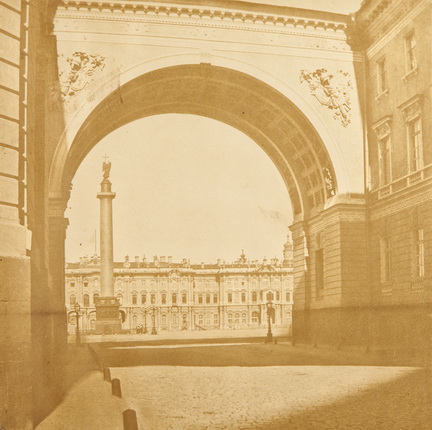
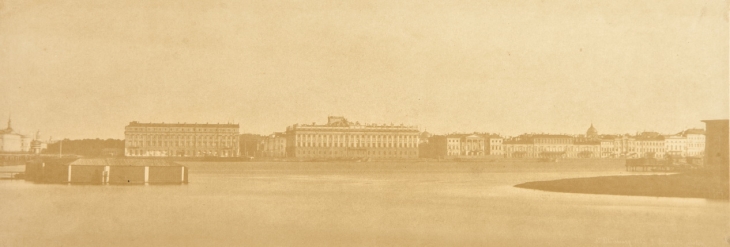
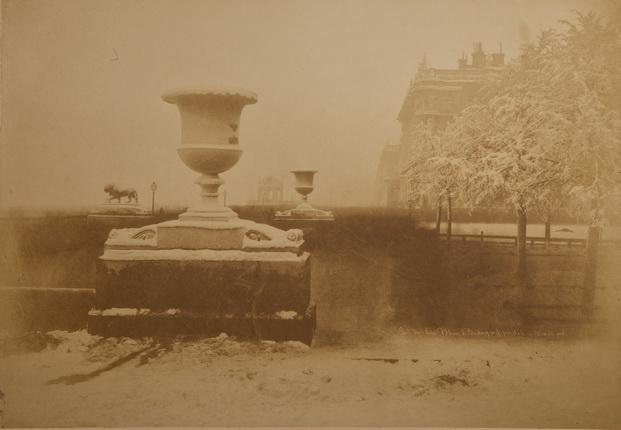
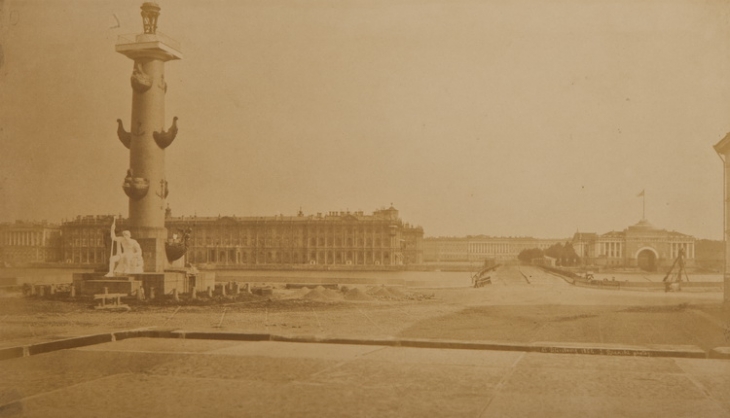
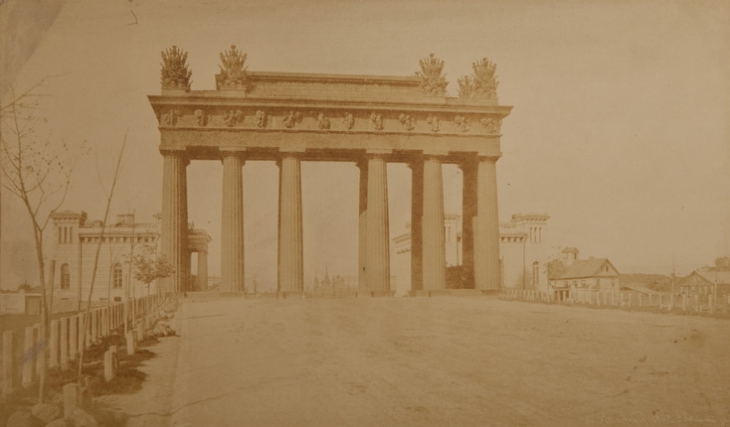
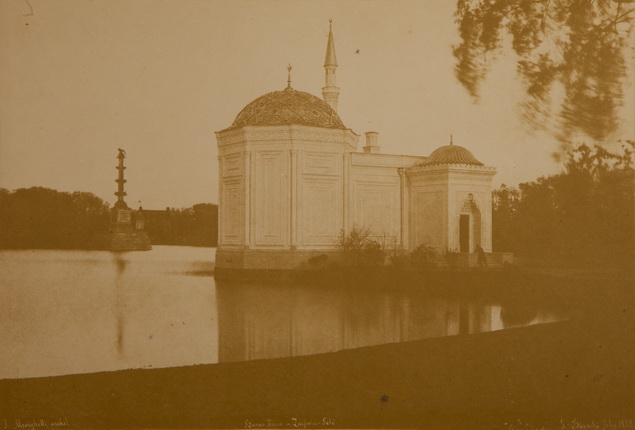
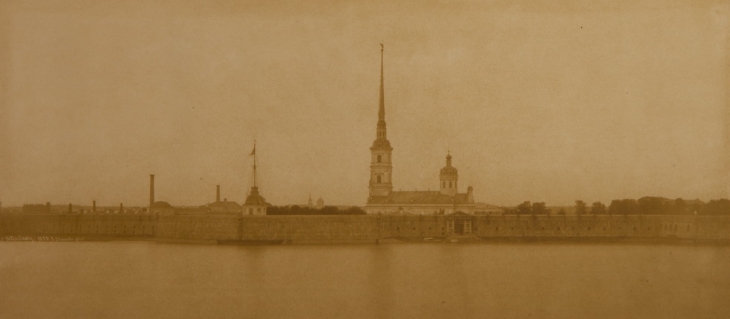
Ivan Bianchi. Mansion in a park. Probably the dacha of Count Sergei Lanskoy, situated northwest of St. Petersburg between Chornaya Rechka and the road to Vyborg. Albumen print, 1853. © Jean Olaniszyn, Archivio Ivan Bianchi
Ivan Bianchi. St. Petersburg. Panteleimonovsky Bridge, 1822-1824. Designed by engineers Wilhelm von Traitteur and Vassily Khristianovich. Albumen print, 1853. © Jean Olaniszyn, Archivio Ivan Bianchi
Ivan Bianchi. St. Petersburg. Cathedral of Our Lady of Kazan, 1801-1811. Architect: Andrei Voronikhin. Albumen print, 1853. © Jean Olaniszyn, Archivio Ivan Bianchi
Ivan Bianchi. St. Petersburg. Chapel of St. Nicholas the Wonderworker on Blagoveshchensky Bridge, 1854. Not preserved. Architect: Andrei Stakenschneider. Albumen print, 1854. © Jean Olaniszyn, Archivio Ivan Bianchi
Ivan Bianchi. St. Petersburg. Palace Square with Alexander's Column, 1834. Architect: Auguste de Montferrand. View of the Admiralty, 1806-1823. Architect: Andreyan Zakharov. Albumen print, no date. © Jean Olaniszyn, Archivio Ivan Bianchi
Ivan Bianchi. St. Petersburg. Palace Square with Alexander's Column, 1834. Architect: Auguste de Montferrand. View through Triumphal Arch of the General Staff, 1819-1929. Architect: Karl Rossi. Albumen print, no date. © Jean Olaniszyn, Archivio Ivan Bianchi
Ivan Bianchi. St. Petersburg. View from Petersburg Embankment. Marble Palace, 1768-1785. Architect: Antonio Rinaldi. Albumen print, 1853. © Jean Olaniszyn, Archivio Ivan Bianchi
Ivan Bianchi. St. Petersburg. Admiralty Embankment In the foreground the vases on Petrovsky Quay, behind them a lion on Palace Quay. In the distance the Jordan temporary construction can be seen Albumen print, 1854. © Jean Olaniszyn, Archivio Ivan Bianchi
Ivan Bianchi. St. Petersburg. Spit of Vasilyevsky Island with Rostral Column, 1805-1810. Architect: Thomas de Thomon, sculptor: Samson Sukhanov. View of the Winter Palace and Admiralty. Albumen print, 1854. © Jean Olaniszyn, Archivio Ivan Bianchi
Ivan Bianchi. St. Petersburg. Moscow Triumphal Gates, built in 1834-1838. Design by Vassily Stasov. Albumen print, 1854. © Jean Olaniszyn, Archivio Ivan Bianchi
Ivan Bianchi. Turkish Bath Pavilion (1850-1852, architect: Ippolit Monighetti) and Chesma Column (1774–1778, architect: Antonio Rinaldi) in the Catherine Park, Tsarskoye Selo. Albumen print, 1852. © Jean Olaniszyn, Archivio Ivan Bianchi
Ivan Bianchi. St. Petersburg. Sts.Apostles Peter and Paul Cathedral, 1712-1733, Peter and Paul Fortress Architect: Domenico Trezzini. View from the Winter Palace. Albumen print, 1853. © Jean Olaniszyn, Archivio Ivan Bianchi
Moscow, 27.02.2014—23.03.2014
exhibition is over
Share with friends
Project presented by Ivan Bianchi Archive, Rivellino Cultural Centre, Locarno (Switzerland), Russian Academy of Arts Research Library (St. Petersburg), Russian National Library (St. Petersburg)
Curators: Jean Olaniszyn, Arminio Sciolli, Igor Zhuravkov
For the press
Ivan (Giovanni) Bianchi (1811–1893) was born in Varese, Italy, spent his adolescence studying painting in Moscow and perfected his knowledge of art in Rome and Paris. Most of his life he worked in St. Petersburg. He died in Lugano, Switzerland.
Bianchi was undoubtedly a cosmopolitan, one of those fortunate people rarely encountered in the 19th century for whom contrasts in the geography, language and climate of different countries prove no hindrance in finding their identity, occupation and vocation. Of course he was assisted by achievements in technical progress — Bianchi travelled on the first trains and worked in the first photographic studios. But it was talent that enabled him to see the beauty of the wider world through a lens.
Like all early photographers, Bianchi was a ‘sun worshipper’, since the work of these masters directly depended on daylight, especially in gloomy St. Petersburg. The sun illumines the photographer’s best images — Bianchi was one of the first to shoot views of the Russian capital — with magical luminescence, the special glimmer discerned by perceptive and poetically inclined artists on the banks of the Neva.
Looking at panoramas of St. Petersburg embankments and Moscow squares, we are struck by the depth of plane and multidimensionality of space, skilfully captured by a lens that was still rudimentary. The blurred contours of moving vehicles or the mysterious outline of a human figure smudged on the wet collodion are as touching as the first steps of a child. But in the case of Bianchi’s images we very rarely stop to consider that this was just the outset of photography, still poorly equipped by technology. Far more often we are in awe of his mastery, his ability to devise the composition of an image, to convey the true dimensions of imposing architectural structures in a natural setting while revealing the most subtle and significant details.
Bianchi photographs the majestic palaces and mansions of St. Petersburg and the elaborate churches of the old capital in such a way that comparison of architecture with ‘frozen music’ becomes an absolute truth, more than an eloquent metaphor. This talent was recognised by his contemporaries, and with good reason the St. Petersburg News remarked in 1854 that every one of Bianchi’s photographs is a ‘fully-fledged picture’ that might ‘serve as decoration for any study or boudoir’.
After receiving the title ‘unclassed artist’ from the Imperial Academy of Arts in St. Petersburg in 1858 he actively pursued traditional portraiture in his own studio — ‘Italian photography by the artist Bianchi’, and also photographic reproduction, the copying of artworks, an important tendency in early photography. In the early 1860s Bianchi initiated a new venture that was innovative for his age: photographing the stations and terminals of the Peterhof railway line.
But his fame was primarily as a master of interior photography, including the sumptuous furnishings of halls, studies and formal chambers in the Mariinsky, Stroganov and Sheremetev Palaces and the mansions of Stroganov, Paskevich and Baron Stiglitz in the 1860s to 1870s. In 1870 Bianchi was duly awarded an ‘honorary commendation’ at the All-Russian Manufactory Exhibition.
Levitsky, head of the jury for the photographic section, noted the ‘artistic orientation’ of all his works and described Bianchi as a master renowned for ‘photographs of palace interiors and also views’. Thus the association of professional artists officially approved Bianchi’s contribution and he was inscribed in the history of early Russian photography for perpetuity, after more than thirty years of selfless labour.
1811 — Ivan Bianchi, the son of Carlo Bianchi of Varese (Italy) and Teresa Artari of Arogno (Canton of Ticino, Switzerland) is born on 12 December.
1821 — as a ten-year-old boy Ivan Bianchi travels to Moscow, accompanying his uncle Angelo Giuseppe Artari, who taught the principles of decorative and applied art at the Moscow Palace School of Architecture.
1839 — after graduating from the Moscow Institute of Painting and Sculpture, Bianchi tours Europe at his own expense to further his education.
1846 — Ivan Bianchi returns to Moscow and sends a petition to St. Petersburg, asking the Council of the Imperial Academy of Arts to ‘confer the title of unclassed free artist’; his request is not granted.
1852 — Ivan Bianchi goes to St. Petersburg, where he takes three photographs of the Turkish Bath Pavilion in Tsarskoye Selo.
1854 — the St. Petersburg News newspaper (No. 272, 5 December) writes: ‘Bianchi, who has become famous in Paris and specialises in the photography of views... has already photographed half of St. Petersburg (as many as 60 views). A superb watercolour painter himself, he has chosen vantage points of artistic merit; each one of his photographs is a fully-fledged picture. The clarity is striking and the size of the prints such that they could serve as decoration for any study or boudoir... Those wishing to see and obtain these views may apply to bookshops... The prices, judging by the size of the prints and the difficulties of execution in our climate and with our light, are very reasonable and affordable’.
1858 — Ivan Bianchi receives the title ‘unclassed artist’ for a watercolour portrait presented to the Academy of Arts and painted from life.
1863 — Photographic Illustration magazine (No. 3) reports: ‘The artist and photographer Ivan Bianchi, who became famous in St. Petersburg last summer for his portraits and visiting cards, has taken shots in a laconic photographic style of all the stations and terminals of the Peterhof railway line. One image depicting the station terminal in St. Petersburg is included in this issue, for those wishing to acquaint themselves further with Bianchi’s outstanding works. We recommend his Italian Studio located on Mikhailovskaya Square in St. Petersburg, in the house of Bodisko, apartment No. 15’.
1865 — Ivan Bianchi obtains permission from the Ministry of Internal Affairs to operate a photographic studio at No. 54 Nevsky Prospekt (opposite the Imperial Public Library building).
1870 — Ivan Bianchi receives an ‘honorary commendation’ at the All-Russian Manufactory Exhibition, where his photographic works are shown in the section ‘Items of an educational and artistic nature that may be applied to industry’.
1884 — the architect Nikolai Benois and his wife Camilla, neé Cavos, invite their close family friend Ivan Bianchi to be godfather at the confirmation of their son Alexandre. One of the main ideologists behind the World of Art group, artist and critic Alexandre Benois gives a vivid description of Bianchi in his book ‘My Memoirs’, calling him a true artist, ‘this being evident in his selection of light at a particular moment in time, and his vantage point’.
1884 — Ivan Bianchi returns to Ticino and settles in Montagnola, above Lugano (Switzerland), living in the house of his deceased brother Giuseppe Bianchi.
1893 — After a short illness Ivan Bianchi dies in Lugano on 24 December (his grave has not been preserved).

